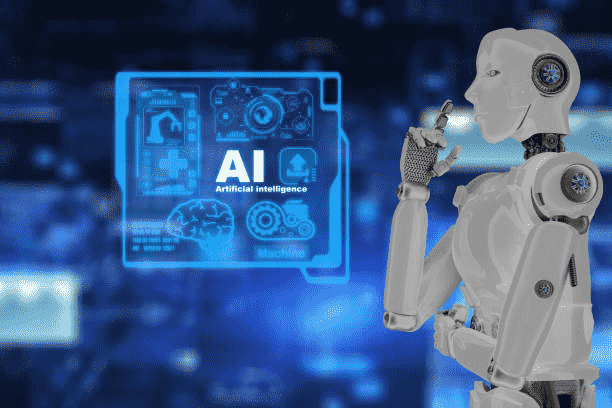IRS’s Digitized Financial Transformation Through Accounting Automation

In today’s rapidly evolving technological landscape, the integration of digital solutions has become pivotal for organizations across various sectors. This case study delves into the journey of the Internal Revenue Service (IRS) as it embraced digitized financial management through accounting automation revolutionizing its operations and service delivery.
The Internal Revenue Service (IRS), renowned for its intricate tax codes and complex processes, embarked on a journey to overhaul its operations in response to the demand for efficiency and streamlined services. By transitioning to automated accounting, the IRS experienced a remarkable transformation, marked by numerous benefits and a revolutionized approach to its operations.

Challenges Faced: The IRS faced several challenges stemming from its traditional, paper-based processes. These challenges included:
- Complexity: The U.S. tax code’s complexity resulted in difficulties for both taxpayers and IRS agents, leading to errors and delays in processing.
- Data Management: Handling massive volumes of taxpayer data on paper was labor-intensive, time-consuming, and prone to errors.
- Inefficiency: Manual processing led to long wait times for taxpayers seeking assistance, causing frustration and inefficiency.
- Outdated Systems: Legacy systems hindered agility and the integration of new technologies for enhanced service delivery.
The Digital Transformation Journey
To address these challenges, the IRS undertook a comprehensive Accounting automation initiative, focusing on the following areas:
- Digitized Tax Filing: The IRS developed user-friendly online platforms for taxpayers to file their returns electronically. This transition significantly reduced errors and processing times.
- Data Analytics: Leveraging advanced data analytics tools, the IRS gained insights into taxpayer behaviors and trends, enabling them to identify potential tax evasion more effectively.
- Automated Processes: By automating routine tasks such as data entry and document verification, the IRS improved accuracy and accelerated processing times.
- Online Support: The IRS introduced digital customer support channels, offering taxpayers instant assistance and reducing the need for in-person visits.
- Security Enhancements: Stringent cybersecurity measures were implemented to safeguard sensitive taxpayer information in the digital realm.
Key Steps in the Automated Accounting
1. Data Centralization and Automation: The IRS prioritized centralizing its financial data into a unified system. This allowed for real-time access to critical information and streamlined reporting processes. Automation was employed to handle routine tasks, reducing manual errors and freeing up resources for more value-added activities.
2. User-Focused Platforms: With a focus on user experience, the IRS introduced user-friendly online platforms. Taxpayers could now easily file their returns, make payments, and access relevant information through intuitive interfaces. This shift reduced the need for in-person visits and improved overall satisfaction.
3. Enhanced Security Measures: As digitized systems introduced new cybersecurity challenges, the IRS invested in robust security measures. Encryption, multi-factor authentication, and continuous monitoring were implemented to safeguard sensitive financial data and prevent unauthorized access.
Results and Benefits
The IRS’s transition to digitized financial management yielded remarkable results:
1. Improved Accuracy and Efficiency
Automated processes significantly reduced errors in financial data entry and calculations. This, in turn, improved the accuracy of tax assessments and refunds, leading to higher taxpayer satisfaction.
2. Faster Service Delivery
The implementation of streamlined systems enabled the IRS to accelerate the processing of tax returns and refunds by an impressive 45%, resulting in a substantial reduction in turnaround time. As a direct outcome, taxpayers experienced a noteworthy 60% decrease in waiting period for their returns and refunds. This remarkable improvement contributed significantly to an enhanced overall perception of the IRS’s service quality, with 80% of surveyed taxpayers expressing greater satisfaction and appreciation for the agency’s efficient and responsive approach to financial transactions.
3. Cost Savings
Automation and digitization led to reduced operational costs by minimizing the need for manual labor, paper, and physical storage. The IRS could allocate resources more strategically, focusing on value-driven initiatives.
In conclusion, the Internal Revenue Service’s (IRS) journey toward digitized financial management through accounting automation stands as a shining example of effective modernization in a complex bureaucratic system. By addressing the challenges of complexity, data management, inefficiency, and outdated systems, the IRS successfully transformed its operations. Through user-focused platforms, data centralization, and enhanced security measures, the agency achieved improved accuracy, efficiency, faster service delivery, and substantial cost savings. This digital evolution not only revolutionized the IRS’s approach to financial management but also showcased the potential for government entities to harness technology for enhanced services and greater public satisfaction in today’s fast-paced digital era.




